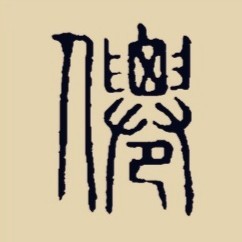 马老四
马老四-
learning 是learn的现在分词,另外也可以表示为有知识的,博学的,learn是动词
 大鱼炖火锅
大鱼炖火锅-
learning是learn现在分词。。
 meira
meira-
现在分词
learning用中文译音怎么读?
learning 英[u02c8lu025c:nu026au014b]美[u02c8lu025c:rnu026au014b]n. 学问,学术,知识;v. (learn的现在分词) 学习;全部释义>>[例句]Does he really have learning difficulties?他真有学习障碍吗?2023-07-17 20:47:561
同义词辨析 知识讲解 studying 和 learning,study 和learn的区别
learn: 常指一般性的学习,尤指初级阶段的学习,表示摹仿实践的过程;着重成果时,作"学会"解。study: 着重指学习过程和高深的或周密的研究,尤指从书本上学习。studying和learning 分别是study和learn的动名词形式2023-07-17 20:48:512
learning英译 问题: learning英译是什么?
"learning"的英译是"学习"。2023-07-17 20:48:582
learn什么意思?
学习2023-07-17 20:49:193
Learning用英语怎么读
了儿柠2023-07-17 20:49:462
学习 用英语怎莫说
Study2023-07-17 20:49:547
为什么用learning ?有什么语法吗?
of doing something2023-07-17 20:50:1610
learning怎么读
learning [lu0259:niu014b]学习;学问learning[英][u02c8lu0259:niu014b] [美][u02c8lu025anu026au014b]2023-07-17 20:50:402
什么是Learning
learning 是 learn 是动名词形式,本义指学习的行为过程,常用来表示学问、学术、知识。2023-07-17 20:50:503
learning 总结是什么意思
learning学习总结,学习(指作为经验直接结果的永久性行为变化)。learning是一种行为计算的方法。所有的行为和这行为的后果已经确定下来,进行总结。2023-07-17 20:51:081
learn怎么读?
英 [lu025c:n]释义:vt 学习;得知;认识到vi 学习;获悉[ 过去式 learned或 learnt 过去分词 learned或 learnt 现在分词 learning ]短语:learn by heart 记住 ; 背诵 ; 背熟 ; 牢记扩展资料:重点词汇用法:learnv (动词)1、learn的基本意思是“学,学习”,指通过他人的讲授或从经验中获得知识或技能,表示处于初级阶段或具有技术性的学习活动,强调的是一个由“不知道”到“知道”的过程,也可表示学习的成果,即“学会,学到”。还可指“听说,得知”。2、learn可用作及物动词,也可用作不及物动词。用作及物动词时,接名词、动名词、(带疑问词的)动词不定式、或由that或疑问词引导的从句作宾语。当作“教”或“给某人一个教训”解时,还可接双宾语,偶尔还可接以形容词充当补足语的复合宾语。3、learn作“听说,获悉”解时,是传达信息的动词,常可用一般现在时来代替一般过去时。2023-07-17 20:51:181
learning是不是,系动词
不是的 这句话中is不是作为系动词出现的 ,is learning 是谓语,to swim是做learn的宾语,因为learn是及物动词.谢谢!望采纳喔2023-07-17 20:51:341
learning前面加on at还是in?
应该是on吧2023-07-17 20:51:422
Learnnig是什么意思?
正在学习的意思2023-07-17 20:51:5013
learning后面动词怎么用
learning 后面动词用谓语动词单数形式,如 Learning is good.2023-07-17 20:52:121
learning和acquiring的区别
Is learning a foreign language a question of learning new skills or a question of acquiring new knowledge? 学习外国语是学习一种新技能,还是获取2023-07-17 20:52:222
learning怎么读啊(ilearning)
您好,我就为大家解答关于learning怎么读啊,ilearning相信很多小伙伴还不知道,现在让我们一起来看看吧!1、可以这样理解。本文就讲到这里... 您好,我就为大家解答关于learning怎么读啊,ilearning相信很多小伙伴还不知道,现在让我们一起来看看吧! 1、可以这样理解。2023-07-17 20:52:281
learning和learned做形容词时分别是什么意思?有什么区别??
其实它们是不同的,learning 单独使用的话是做名词,表示“学问”,而learned 单独使用是做形容词,译为“有学问的;博学的”因为learn 本身是动词,所以加上一个东西它的意思就会变,它的词性也跟着变,但是要是本身是形容词的词就不一样了,比如interesting 和interested 就不一样了,它们都是形容词,但是有区别的,前者是物做主语,表示“……有兴趣”,而后者是人做主语,表示“对……感兴趣”,是不同的,你得区分好!,3,第一个是正在学习(进行时)第二个是已经学过(过去时),2,2023-07-17 20:54:261
learn的过去式是learned吗?
有learnt和learned 两种,都可以用2023-07-17 20:54:494
learning怎么翻译
1、learning,英语单词,名词、动词,作名词意为学习;学问,作动词意为学习(learn的现在分词)。2、WhydoyoulikelearningEnglish?你为什么喜欢学英语呢?3、Andofftheygointothenextroundoflearning.就这样,学习者们开始了新一轮的学习过程。4、WhydoyoulikelearningJapanese?你为什么喜欢学日语呢?2023-07-17 20:55:301
learn英语怎么说
learning,chinese原文翻译如下:原文For a month in the spring of 1987, my wife Ellen and | lived in the bustling eastern Chinese city of Nanjing withour 18-month-old son Benjamin while studying arts education in Chinese kindergartens and elementary schools. Butone of the most tlling lessons Ellen and | got in the difference between Chinese and American ideas of educationcame not in the classroom but in the lobby of the Jinling Hotel where we stayed in Nanjing.The key to our room was attached to a large plastic block with the room number on it. When leaving the hotel, aguest was encouraged to turn in the key, either by handing it to an attendant or by dropping it through a slot into abox. Because the key slot was narrow, the key had to be positioned carefully to fit into it.Benjamin loved to carry the key around, shaking it vigorously. He also liked to try to place it into the slot.Because of his tender age and incomplete understanding of the need to position the key just so, he would usuallyfail. Benjamin was not bothered in the least. He probably got as much pleasure out of the sounds the key made ashe did those few times when the key actually found its way into the slot.译文霍华德加德纳于1987年春天带着妻子艾伦和我们18个月大的儿子本杰明,在繁忙的中国东部城市南京呆了一个月,同时考察了中国幼儿园和小学的艺术教育情况。 但是,艾伦和我得到的关于中美教育观念差异的最难忘的体验不是课,而是来自我住在南京时住的金陵酒店的大厅。我们门的钥匙在有房间号码的大塑料板上。 酒店鼓励客人外出时留下钥匙,可以交给服务员,也可以从一个槽口塞进钥匙箱。 因为洞很窄,所以必须把钥匙放好再进去。本杰明喜欢拿着钥匙走来走去,一边走一边用力摇晃。 他也喜欢试着把钥匙塞到槽口里。 他还很小,不太清楚必须把钥匙装好,所以很难放进去。本杰明一点也不介意。 他从钥匙的声音中得到的乐趣,可能和他偶尔成功把钥匙放入插槽中得到的乐趣一样多。 艾伦和我满不在乎,本杰明拿着钥匙在钥匙箱的槽口上敲击。他的探索行为似乎没有什么害处。 但我很快观察到了有趣的现象。 酒店里的所有中国工作人员都在附近,就会来看本杰明,看到他第一次失败,就想帮忙。他们轻轻握住本杰明的手,直接导向钥匙槽口,进行必要的重新定位,然后把钥匙插入槽口。 然后那个“老师”好像期待着对我和艾伦微笑,道谢,有时他有点皱眉,似乎觉得我们没有尽到做父母的责任。2023-07-17 20:55:371
learning和learn有什么不同?请举例说明
learn是动词,意思是学习,学会,认识到,得知既是及物动词又是不及物动词My brother is learning English nowlearning是名词,意思是学习,知识,也是learn的动名词(现在分词)形式book learning书本知识祝你进步,有不会的可以再问我哦2023-07-17 20:55:592
学的英语是什么
learnstudy2023-07-17 20:56:106
learning怎么读
learning可以读成:乐恩宁。学习英:[ˈlɜːnɪŋ]美:[ˈlɜːrnɪŋ]n.学习; 知识; 学问; 学识; v.学; 学习; 学到; 学会; 听到; 得知; 获悉; 记住; 背熟; 熟记; 例句:Our children"s different needs and learning styles created many problems孩子们不同的需求和学习方式给我们带来了许多问题。2023-07-17 20:56:433
learning
【答案】:B解析:考查时态。人类学会用火是过去发生的事情,故要用过去时态。learn的过去式、过去分词有两种形式,即learned,learnecl或者leamt,leamt。注意,[C]项为过去进行时,但此处显然不含“进行”义。另外,由后面结构相同的we have to know what men did…一处所用时态也完全可推知本题答案。2023-07-17 20:57:061
learning英文怎么读
learning,chinese原文翻译如下:原文For a month in the spring of 1987, my wife Ellen and | lived in the bustling eastern Chinese city of Nanjing withour 18-month-old son Benjamin while studying arts education in Chinese kindergartens and elementary schools. Butone of the most tlling lessons Ellen and | got in the difference between Chinese and American ideas of educationcame not in the classroom but in the lobby of the Jinling Hotel where we stayed in Nanjing.The key to our room was attached to a large plastic block with the room number on it. When leaving the hotel, aguest was encouraged to turn in the key, either by handing it to an attendant or by dropping it through a slot into abox. Because the key slot was narrow, the key had to be positioned carefully to fit into it.Benjamin loved to carry the key around, shaking it vigorously. He also liked to try to place it into the slot.Because of his tender age and incomplete understanding of the need to position the key just so, he would usuallyfail. Benjamin was not bothered in the least. He probably got as much pleasure out of the sounds the key made ashe did those few times when the key actually found its way into the slot.译文霍华德加德纳于1987年春天带着妻子艾伦和我们18个月大的儿子本杰明,在繁忙的中国东部城市南京呆了一个月,同时考察了中国幼儿园和小学的艺术教育情况。 但是,艾伦和我得到的关于中美教育观念差异的最难忘的体验不是课,而是来自我住在南京时住的金陵酒店的大厅。我们门的钥匙在有房间号码的大塑料板上。 酒店鼓励客人外出时留下钥匙,可以交给服务员,也可以从一个槽口塞进钥匙箱。 因为洞很窄,所以必须把钥匙放好再进去。本杰明喜欢拿着钥匙走来走去,一边走一边用力摇晃。 他也喜欢试着把钥匙塞到槽口里。 他还很小,不太清楚必须把钥匙装好,所以很难放进去。本杰明一点也不介意。 他从钥匙的声音中得到的乐趣,可能和他偶尔成功把钥匙放入插槽中得到的乐趣一样多。 艾伦和我满不在乎,本杰明拿着钥匙在钥匙箱的槽口上敲击。他的探索行为似乎没有什么害处。 但我很快观察到了有趣的现象。 酒店里的所有中国工作人员都在附近,就会来看本杰明,看到他第一次失败,就想帮忙。他们轻轻握住本杰明的手,直接导向钥匙槽口,进行必要的重新定位,然后把钥匙插入槽口。 然后那个“老师”好像期待着对我和艾伦微笑,道谢,有时他有点皱眉,似乎觉得我们没有尽到做父母的责任。2023-07-17 20:57:161
的learning是动名词还是现在分词
learning是动名词还是现在分词要跟句语境来定在句中用作主语那肯定是动名词在句中用在连系动词后面,那完全由意境决定,两者都有可能。多记句型不必太在意它是啥词2023-07-17 20:57:361
learning和learned做形容词时分别是什么意思?有什么区别?
其实它们是不同的,learning 单独使用的话是做名词,表示“学问”,而learned 单独使用是做形容词,译为“有学问的;博学的”因为learn 本身是动词,所以加上一个东西它的意思就会变,它的词性也跟着变,但是要是本身是形容词的词就不一样了,比如interesting 和interested 就不一样了,它们都是形容词,但是有区别的,前者是物做主语,表示“……有兴趣”,而后者是人做主语,表示“对……感兴趣”,是不同的,你得区分好!2023-07-17 20:57:441
learn and learning 是怎么运用的?
举凡所有英语单词,如果有加上"ing",即表示是进行式。如: we are learning how to speak mandarin now. 我们正在学习如何说中文。I am "driving"=我正在驾驶。只有单字 "learn" 则只是一种表达...如句子: we want to learn mandarin. 我们想要学习中文。I can "drive"=我会驾驶。2023-07-17 20:57:552
learning 后面加形容词的什么形式
后面应该是加名词2023-07-17 20:58:063
learning和learning的区别
题主是否想询问“learning和learn的区别”?意思与词性不同。1、learn是动词,意为学习、认识、得知。2、learning是名词,意为学习、学问,也是learn的现在分词形式,也可以表示为有知识的,博学的。2023-07-17 20:58:121
learnings是什么意思
learnings学习例句Let them participate in learnings but not invest here and create properties. 让他们参与到学习的进程中来,但是别让他们在这里投资,创造财富。And I think one of my biggest learnings has been, never define yourself by a product. 在过去的工作中,我总结了一条非常宝贵的经验&千万不要用某个产品束缚了自己。2023-07-17 20:58:411
learning还是learnning?
learning2023-07-17 20:58:518
learning是不是可数名词
1.这里不做“演讲”一解释,指“说话,言论”,不可数 2.可数名词复数作一类要加定冠词"the" 3.day broke 固定搭配,"破晓" 4.特指,Wilson一家人都对经营很在行 5.特指,与2不同 6.表示通常情况下的日常应用 7.注意,the French(法国的) language=French(法语),开始做形容词,懂了么? 8.不行,the nature 特指大自然2023-07-17 20:59:061
自学的英语短语learn
自学的英语短语:learn by oneself。 learn:v.学;学习;学到;学会;听到;得知;获悉;记住;背熟;熟记; 第三人称单数: learns现在分词: learning过去式: learnt learned过去分词: learnt learned 扩展资料 It takes a long time to learn to speak a language well. 学会说好一种语言需要花很长的时间。 A good dictionary is indispensable for learning a foreign language. 一本好词典是学习外语必备的`。 The children are learning to understand people of different faiths. 孩子们在学习理解不同宗教信仰的人。2023-07-17 20:59:131
learning to learn是什么意思
学习怎么学习2023-07-17 20:59:332
learning是几个音节
2个2023-07-17 21:00:072
learning用a,an,the,哪一个?
应该用the,即the learning,因为learning不可数。2023-07-17 21:00:151
learning前应置什么词性
learning是learn的动名词形式即learning已经是名词性前面可以加be变成现在进行时I am learning我正在学习2023-07-17 21:01:091
learning可数吗
learning 和 knowing都是不可数2023-07-17 21:01:173
my learning experience的learning是什么词性?
my learning experience.句子中的learning是动名词, 做形容词。意思是:我的学习经历。我的学习经验。2023-07-17 21:01:251
learning and learn的意思
learning:n "学习,知识,学识,训练,学问“learn:vi&vt 学习,学会,知道,获悉,认识到2023-07-17 21:01:341
learn的用法有哪些
learn的基本意思是学、学习,指通过他人的讲授或从经验中获得知识或技能,表示处于初级阶段或具有技术性的学习活动,强调的是一个由不知道到知道的过程,也可表示学习的成果。 learn的意思 learn是一个英语单词,可以用作动词,可以翻译为学习、学会等等。第三人称单数:learns,过去分词:learnt、learned,现在进行时:learning,过去式:learnt、learned。 learn及物动词的用法 1、学习、学会,其后直接跟宾语,例:He has learnt a new skill.他学会了一项新技能。 2、认识到、得知,其后直接跟宾语,或则后跟that引导的宾语从句,例句:He has learned that dishonesty does not pay.他已经认识到不诚实是没有好报的。 3、接受(教训),固定表达,I leant a lesson.我接受了教训。 learn不及物动词的用法 1、学、学习(+from),Why don"t you learn from my mistakes?你为何不从我的错误中吸取教训呢? 2、得知、获悉(+of/about),We learned of his marriage in the newspapers.我们从报上获悉他结婚了。 learn的常用词组 learna bout/of的用法 1、学到(知识等)、了解,He read a lot so as to learn about the in tell ectual historyof Europe.他大量阅读以便了解欧洲思想史。 2、获悉、听说,I have learned of your promotion from your manager.我已经从你的经理那儿听说你升职了。 短语 learn to say be fore you sing(=learntowalkbeforeyourun),凡事要按步就班,凡事要循序渐进。learn young,learn fair,少时学,学得好。never too old to learn,活到老,学到老。soon learnt,soon forgotten,学得快,忘得快。2023-07-17 21:02:131
learn怎么读?
learn英 [lu025c:n] 美 [lu025an] vt.& vi. 学习,学会;习得;得知;记住 vt. 记住;学习;得知;认识到 vi. 学习;获知 学; 学会; 学学; 了解 过去式:learnt learned 过去分词:learnt learned 现在分词:learning 第三人称单数:learns know, learn, comprehend, understand这些动词都含“懂,知道,明了”之意。know: 普通用词,多指通过学习、经验或他人传播而得到知识,含直接知道的意味。learn: 通常指通过他人而获得消息或情况,侧重从不知到知的变化过程。comprehend: 侧重熟悉了解的过程。understand: 指对事物已有彻底的认识,不仅知其性质、含义和细节,而且了解其内外的关系。learn, study这两个动词均含“学习”之意。learn: 常指一般性的学习,尤指初级阶段的学习,表示摹仿实践的过程;着重成果时,作"学会"解。study: 着重指学习过程和高深的或周密的研究,尤指从书本上学习。及物动词 vt. & 不及物动词 vi.1.学习; 学; 学会 It is never too late to learn.活到老学到老。2.得知; 获悉; 听说 They never learn, never give up.他们从不吸取教训, 决不投降。They learned she"s gone.他们得知她走了。及物动词 vt.1.记住;背熟;熟记 H spent three hours learning Lincoln"s Address at Gettysburg by heart.他花了三小时把林肯的《葛底斯堡讲话》背了下来。2.认识到;意识到;(从…)吸取教训 ~ (from sth) 3.获得;养成(习惯、规矩等) He learned honesty from his mother.他从母亲那里学会诚实。learn [lu0259:n]vt.(learned [-t, -d], learnt [-t])学, 学会; 记住听到, 知道, 弄清楚[俚]教, 教训记[背]住learn Chinese学汉语learn (how) to swim学游泳learn a lesson学习功课, 获得教训I learn it from him.我是从他那里听来的。 词性变化learn [lu0259:n]vi.学, 学习, 学会听到, 获悉; 知道, 认识到He learns very quickly.他学得很快。I learned of the accident only yesterday.我昨天才听说这个事故。 继承用法learnable["lu025c:nu0259bl]adj. 习惯用语I am [have] yet to learn. 我还不大清楚。In doing we learn. [谚]边干边学; 在 实践中学习。Never too old to learn. [谚]活到老, 学到老。Soon learnt, soon forgotten. [谚]学得快, 忘得快。We regret to learn that ... (函电等习用语)惊悉...learn off 记牢, 背熟1.Children must learn socially acceptable behaviour. 儿童必须学会社会上认可的行为举止。 2. Older workers can be as adaptable and quick to learn as anyone else. 较年长的工人的适应能力和学习速度有时并不亚于其他任何人。 3. He was astonished to learn he"d won the competition. 他听说他比赛赢了,感到很惊讶。 4. Where did you learn to cook? 你在哪里学的烹调? 5. He needs to learn to curb his temper. 他得学着控制自己的脾气。2023-07-17 21:02:421
learning可以加s吗
不可以。_earning是不可数的,它是learn的现在分词,表示学习、学问,是不能后加s的。2023-07-17 21:02:491
learn的现在分词
learning2023-07-17 21:03:004
good learning habits中的learning语法
动词的现在分词形式有时候可以做形容词使用,比如learning, interesting, boring,这里是指好的学习习惯,做形容词修饰habits,希望我的回答可以帮助到你,谢谢!2023-07-17 21:03:212
retina和ips哪个好
毫无疑问Retina,Retina可以理解成ips的基础上分辨率的提高,Retina就是视网膜成像,简单的来说就是Retina的成像所出现的亮点是视网膜无法分辨的,所以画面大的细腻程度就高了2023-07-17 20:58:391
夏嘎电影节最佳导演
最佳导演奖:侯孝贤,《聂隐娘》(中国台湾)【第68届戛纳电影节完整获奖名单】 最佳影片金棕榈奖:《流浪的迪潘》(法国) 评审团大奖:《索尔之子》(匈牙利),导演:拉斯洛·杰莱斯 最佳导演奖:侯孝贤,《聂隐娘》(中国台湾) 评委会奖:《龙虾》(希腊),导演:约格斯·兰提莫斯 最佳男演员奖:文森特·林顿,《市场法律》(法国) 最佳女演员奖:艾曼纽埃尔·贝尔科,《我的国王》(法国) 鲁妮·玛拉,《卡罗尔》(美国) 最佳剧本奖:《慢性》(墨西哥),导演:米歇尔·弗兰克 金摄影机奖(最佳处女作奖):《大地与阴影》(哥伦比亚),导演:César Augusto Acevedo 最佳短片奖:《98浪潮》(黎巴嫩),导演:Ely Dagher 荣誉金棕榈奖:阿涅斯·瓦尔达2023-07-17 20:58:411
一年级下学期英语说课稿范文三篇
【 #一年级# 导语】习主席已经宣布我国进入了社会主义发展新时期,并且成立了开放更加宽泛的自贸区,减少外国进入我国开创事业的一系列繁杂手续,预示着中国同世界有更进一步的交流了,那么我们当然应该从小就开始培养交流的能力,以积极地态度去面对发展。以下是 无 整理的相关资料,希望帮助到您。 【篇一】 一、说教材 1、教材内容 本节课主要学习单词果然的grandfather,grandmother, cousin, aunt,uncle,he,she,并运用句型Who"s he/she? 询问第三人,并针对此问题用He"s/She"s ……做出正确回答,介绍家庭成员。 2、教材的地位与作用 本课是小学三年级上册第6单元第一课时。课型为操练课。它通过让学生在听听,做做,说说,玩玩,演演中学习用英语询问第三人,回答此类询问并介绍家庭成员,发展学生的语言表达能力,同时进一步培养他们的语言综合运用能力。 3、教学目标 ①、 知识目标:掌握表示家庭成员的词汇:grandfather,grandmother, cousin, aunt,uncle,以及运用此句型:Who"s she/he? 询问第三人,并运用He"s/She"s……来回答,介绍家庭成员,正确区分he和she。 ②、技能目标:培养学生听,做,说,读的能力,以及言语表达能力。 ③、情感目标:激发和培养学生学英语的兴趣,使其主动参与课堂实践活动,从而培养学生合作意识和集体主义精神。 4、教学的重点与难点 本课的重点是运用句型Who"s he/she?询问第三人,及回应此类询问,介绍家庭成员。难点是正确区分和使用he, she。 5、运用任务 ①、用直观教学法 ②、结合TPR活动教学法 ③、愉快游戏教学法 ④、交流法 6、教具准备:磁带、单词卡片。 二、说教法 为了顺利完成教学目标,更好地突出重点,突破难点,根据三年级小学生的心理特点和现有英语认知水平,在本课的教学中,我运用一些直观手段如图片、课件等丰富教学内容,用各种有趣有效的游戏帮学生识记单词,教学单词时让学生动手动口,用手书空拼读字母,不仅集中了学生注意力,也复习巩固了字母教学。在教学单词的同时教授句型,使单词和句子紧密相连,让单词和句子的教学做到词不离句,句不离词,并且配上chant,将本课的核心句型和单词组合到一个chant中,让学生在有节奏的诵读中更轻松地掌握重点句型和单词。为突破难点,让学生正确区分he和she,我在课件出示新词时有意识地将这两个词放入相应的人物中,且单独挑出来,让学生用手指男生说he,指女生说she。配合肢体动作,运用全身反应教学法,帮学生正确区分he和she。我用动画呈现课文A部分,先让学生听句子,然后复述所听句子,鼓励他们大胆举手说,哪怕一个单词都行,培养学生养成认真听,大声说的好习惯,同时也锻炼了学生的听力。在运用环节,我让学生拿出事先带的自己家庭成员的照片,以小组交流和全班集中问答的方式,在实际情景中很好地运用了句型及单词。最后,我再创设情境,将句型加以迁移运用,让学生认识到这一句型不仅能用来询问家庭成员,也能询问其他人。 三、说学法 通过让学生在听、做、动、说、读的过程中,学会用英语说出家庭成员,学会询问第三人和回答此类询问,发展学生的语言思维和运用能力,同时多表扬,勤鼓励,使不同层次的学生都能获得成功的体验。 四、说教学程序 Step I Warming up 1、sing a song《Who are you》 2、greetings [设计思路]:伴随着轻松音乐,通过师生相互的问候和吟唱歌谣等热身活动迅速地引导学生走进英语世界,营造一个良好的用英语的氛围,为新课的教学做好铺垫。 Step II Presentation and drill 教师依次用课件出示老师的家庭成员照片,让学生猜猜画面上是谁,同时引出本课新词和句型。老师带读单词,同时把单词放入句子中读,再指名让学生读一读。强调学生动口动手,边拼读单词边书空写单词。最后用几个有趣有效的游戏操练句型及识记单词。符合小学生爱玩游戏的心理年龄特点。 [设计思路]:用直观的照片将单词引出,单词卡片展示家庭成员的单词,让学生有一种新奇的感觉,产生浓厚的兴趣,符合学生的认知规律和心理年龄特点。 Step III consolidation 1、用动画呈现课文A部分,让学生先听后说最后跟读,训练听说能力。 2、设计一个chant,将核心词汇和句型融合其中,让学生在有节奏的诵读中巩固新知。 [设计思路]:根据小学生爱看动画片的特点,用动画呈现课文对话,提高学生兴趣,强调听说,先听对话,再复述所听句子、单词,提高学生听说能力。设计chant,让学生在充满韵律的句子中轻松掌握重点词汇。 Step4 Application 学生拿出自己的照片,和同桌交流,而后,全班交流。 设计一个情境,帮助学生更好地运用句型。 [设计思路]:有助于学生巩固所学知识,提高学生的会话能力,培养学生对知识的综合应用能力,也再一次体现了语言教学的整体性原则,达到学以致用的目的。 板书单词时,我特意画上了四线三格,为将来学生能书写漂亮的英语起到强的示范作用。 【篇二】 教学内容:1bp22 1. 词汇:say 2. 词组: listen to me. open your mouth. say “ah”. 3. 句型:1) listen to me. 2)open your mouth. 3) say “ah”. 教学目标: 1. using imperatives to give simple instructions. eg: listen to me. 教学重点、难点: 1. using imperatives to give simple instructions. eg: listen to me. 教学过程: pre-task preparation 1. say a chant 2. t: what animal can you see? p: i see… t: in the zoo, i see monkeys and birds. what do you see in the hospital? p: i see a doctor, nurse… if you"re the doctor/ nurse, introduce yourself. p: i am a doctor. i am tall/short/ t: i"m a doctor. i want to see the boy"s throat. what shall i do? while-task procedure 1. (lead in): open your mouth. 1) read the sentence. 2) practice 1: make some sentences. open your eyes. open your books. open your pencil-box…. t: i want to see your throat. open your mouth. p: do the action p2: hello, …open your mouth. p3: do the action. 2. (lead in): say “ah” t: …, open your mouth and say “ah”. (on board) say “ah” 1) read the sentence 2) practice 1: give the commands eg: say “one”, say “hello” 3) practice 2: t: hello, … open your mouth. say “ah” oh, a sore throat p!: hello, … open your mouth. say “ah”. p2: do the action. (one by one) 3. (lead in) listen to me. t: boys and girls, you all did a good job. let"s listen to the music. listen. 1) read the words and phrases.. listen with ears. listen to me… 2) make some phrases. listen to ________. listen to the dog. 3) a chant. listen to the dog. “wang-wang” listen to the cat. “miao-miao” listen to the duck. “ga-ga” listen to the cow. “moo-moo” post-task activities: 1. listen to the tape and read after it. 2. according to the situation and make a dialogue tim is sick. he is in the hospital. the doctor is examining him. a: hello, doctor. b: hello. listen to me. open your mouth. say “ah” a: “ah” b: you have got a cold. assignment: 1. listen to the tape and repeat. 2. try to make a new dialogue. 【篇三】 教学内容:1bp31 1.词汇:pig, they, round 2.词组: fat pig, thin pig, round and round 3.句型:they like to play round and round. 教学目标: 1.using adjectives to describe things eg: thin pig, fat pig 教学重点、难点: 1.using adjectives to describe things 教学过程: pre-task preparation 1.say a chant 2.t: how is the doctor / nurse / cook in the rhyme? p: the doctor / nurse / cook is old. t: an old doctor / nurse / cook 3.●change the sentences: 1)he is a doctor. he is tall.—he is a tall doctor. 2)she is a farmer. she is old.—she is an old farmer. 3)i am a fisherman. i am fat.—i am a fat fisherman. 4)you are a teacher. you are thin.—you are a thin teacher. 4.●guess: 1)i am fat. i am old. i am short. i have got a boat, a net and a fork. i can catch the fish. what am i? 2)i am young. i am tall. i am thin. i have got a pen and a book. i can read and write. what am i? 3)i am tall. i am old. i am fat. i have got a hat, a hoe and a towel. i can take care of the animals. what am i? while-task procedure 1.( lead in ) : pig t: what animal has the farmer got? p: the farmer has got a ________. ( cat, duck, dog, sheep, hen, chick, horse, cow, pig, goat, donkey, goose…) t: yes, the farmer has got a pig. 1) read the word. ●2) a tongue-twister: the pig is very big. 3) how is the pig? ( fat, thin, big, small, old, young ) 4) imitate: i am miss pig / mr. pig. i like to ______. ( eat, sleep ) . i am lazy. 5) how many pigs? ●6) read a rhyme: thin pig, fat pig one and two. thin pig, fat pig. i see you. 2. ( lead in ): they like to play round and round. 1) t: pigs like to eat and sleep. cats like to eat and sleep, too. what do cats like to eat? p: fish t: cats like to eat fish. they like to eat fish. a) read the sentence: they like to eat fish. ●b) join the sentences: my father is tall. my mother is tall.—they are tall. he is eight. she is eight, too.—they are eight. she can write. he can write, too.—they can write. he has got a bicycle. she has got a bicycle, too.—they have got two bicycles. 2) t: the pigs like to eat fish. they like to eat fish. what else do they like to do? they like to play. a) read the sentence. 3) t: what do they like to play? they like to play round and round. a) read the phrase: play round and round b) read the sentence: they like to play round and round. ●4) read the rhyme: fat cat up, thin cat down— they like to play round and round. 5)●make a new rhyme: fat ______ up, thin ______ down— they like to play round and round. post-task activities: 1. listen to the tape and read after it. 2. act out the rhyme 3. ●make a new rhyme: thin ______, fat _______ one and two. thin ______, fat _______ i see you. fat _______up, thin _______ down— they like to play round and round. assignment: 1.listen to the tape and repeat. 2.try to make a new rhyme.2023-07-17 20:58:331
